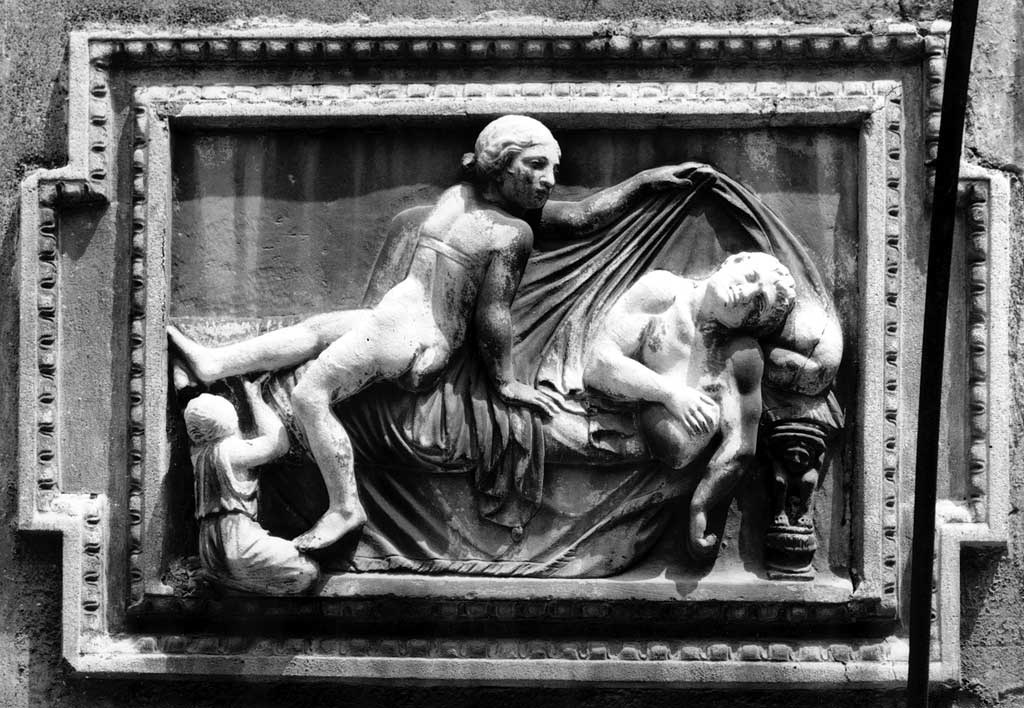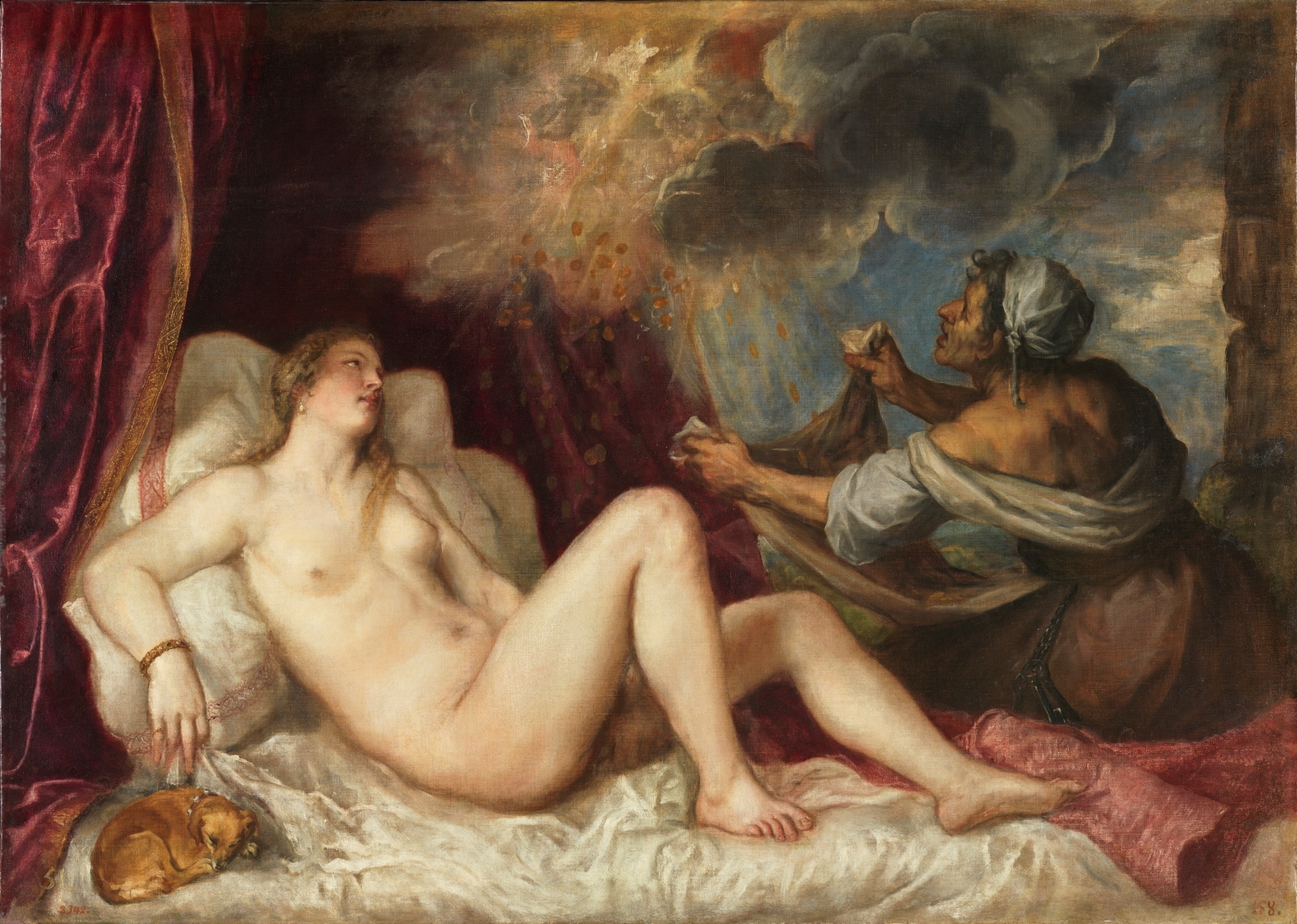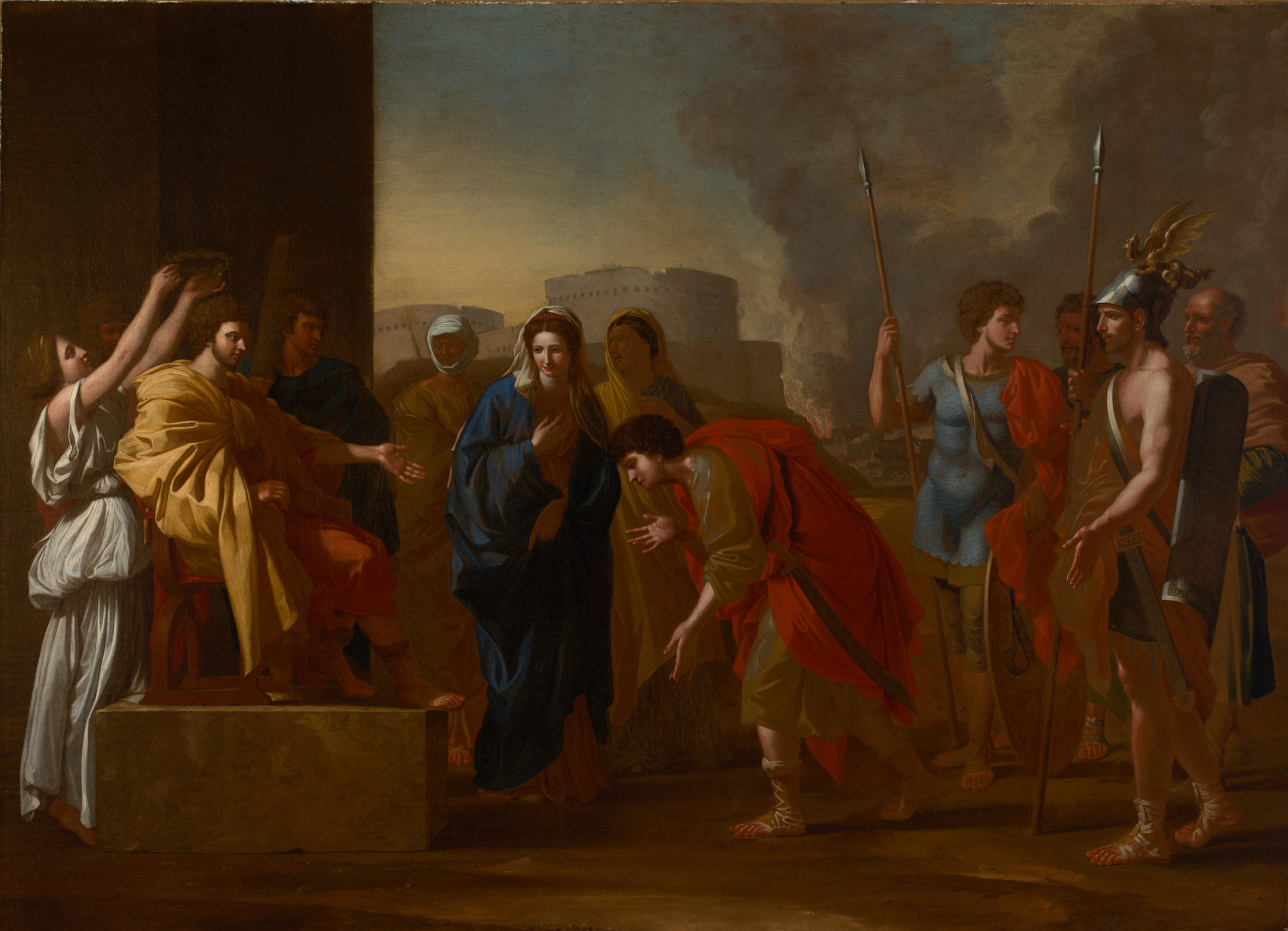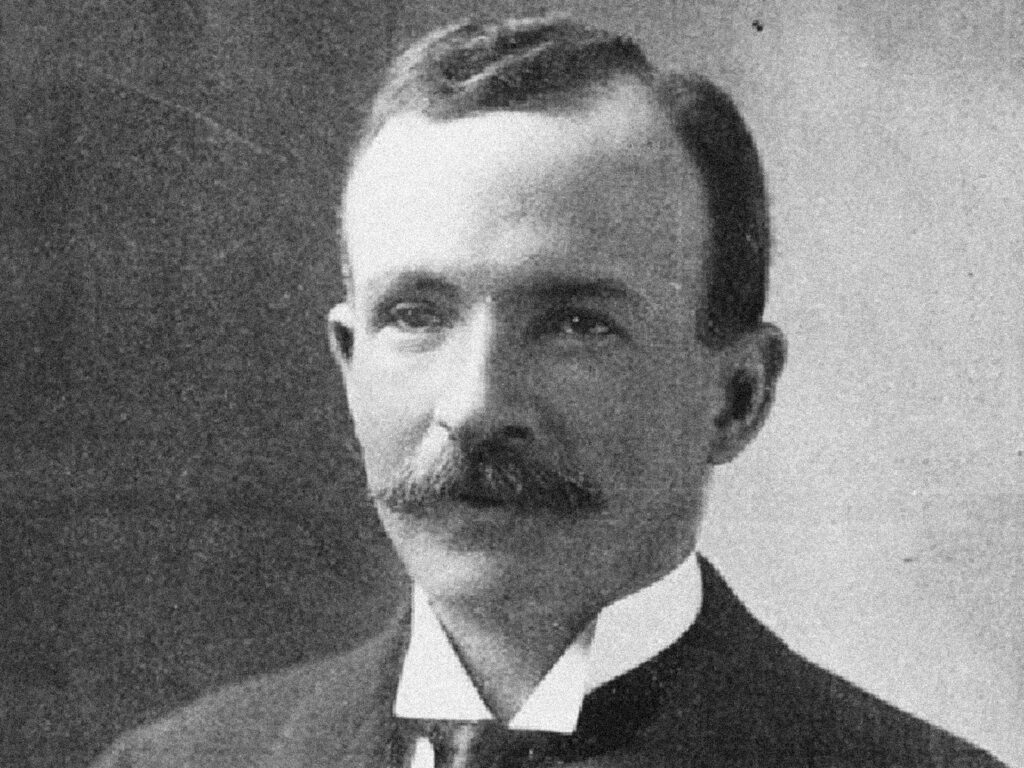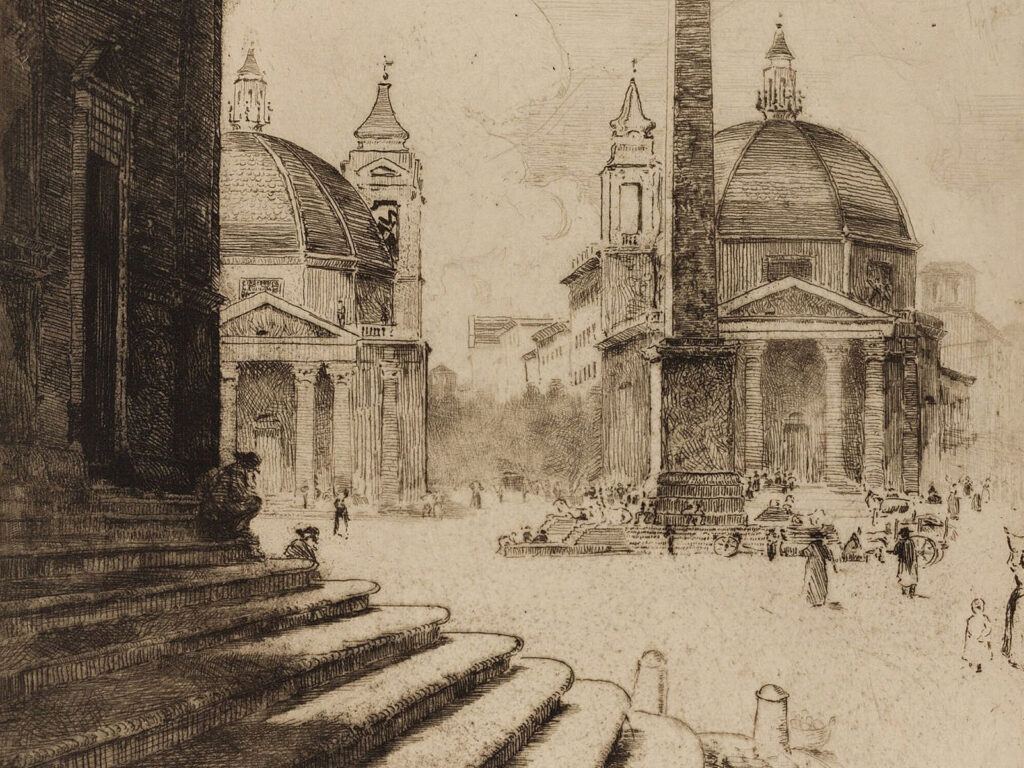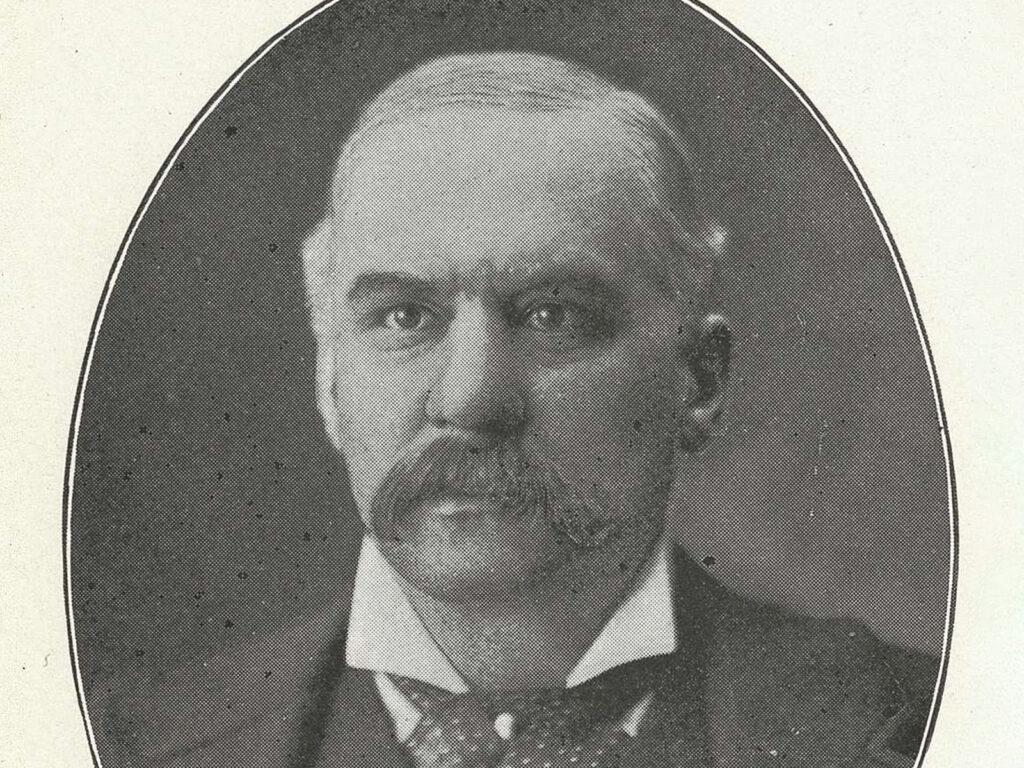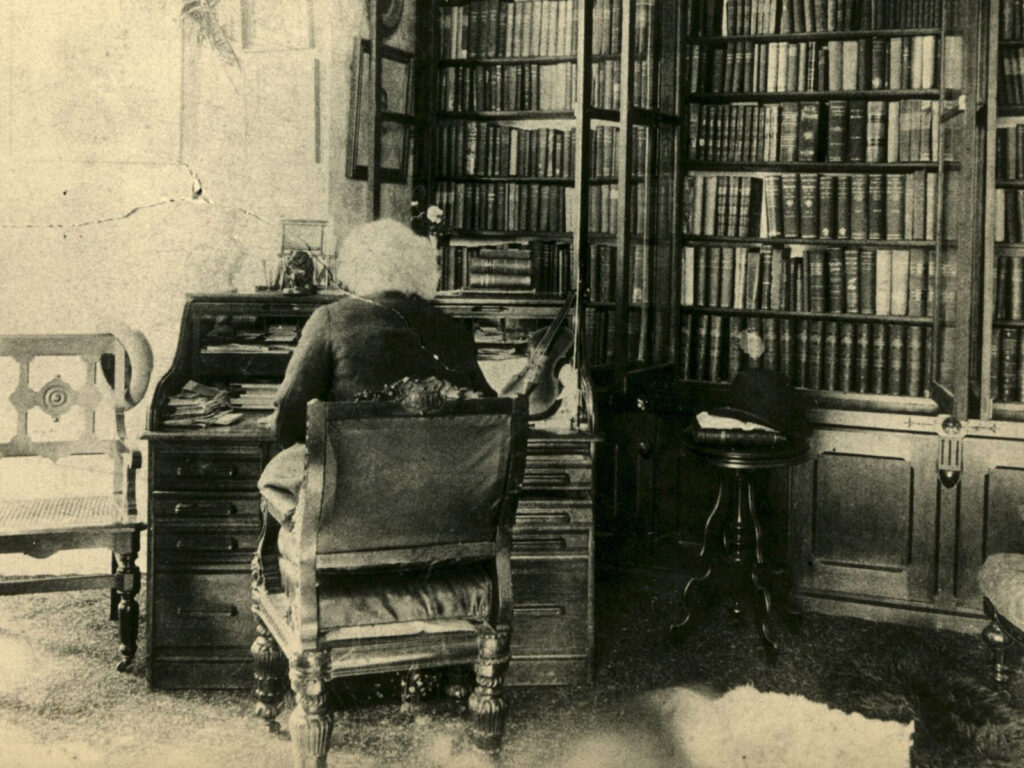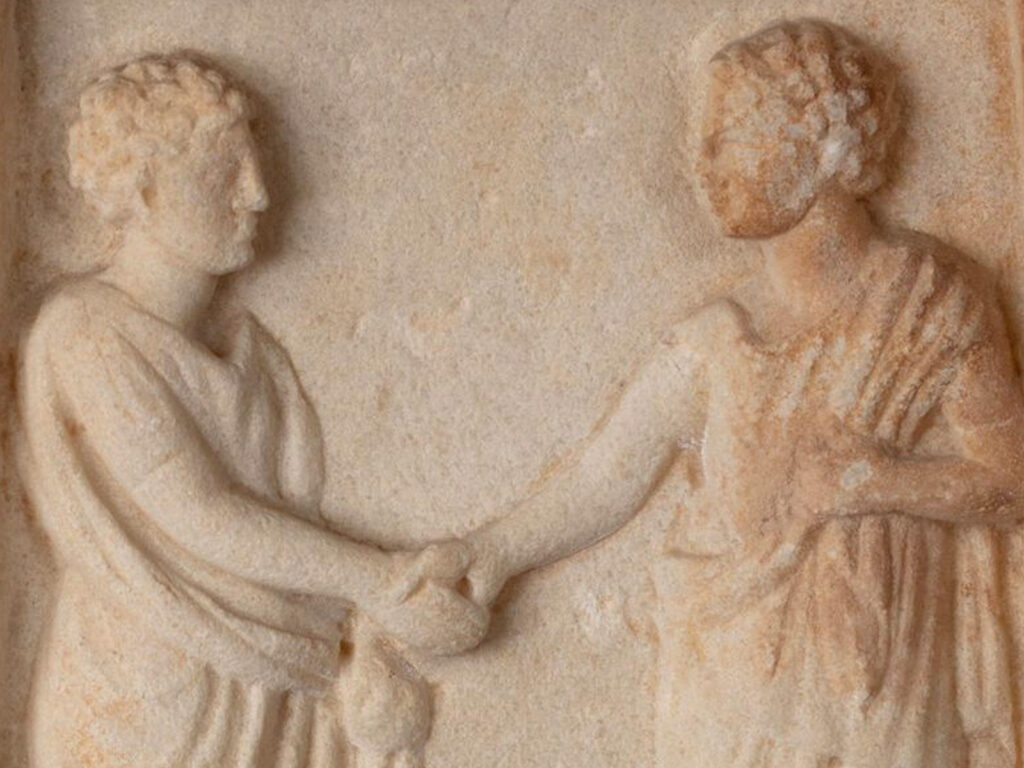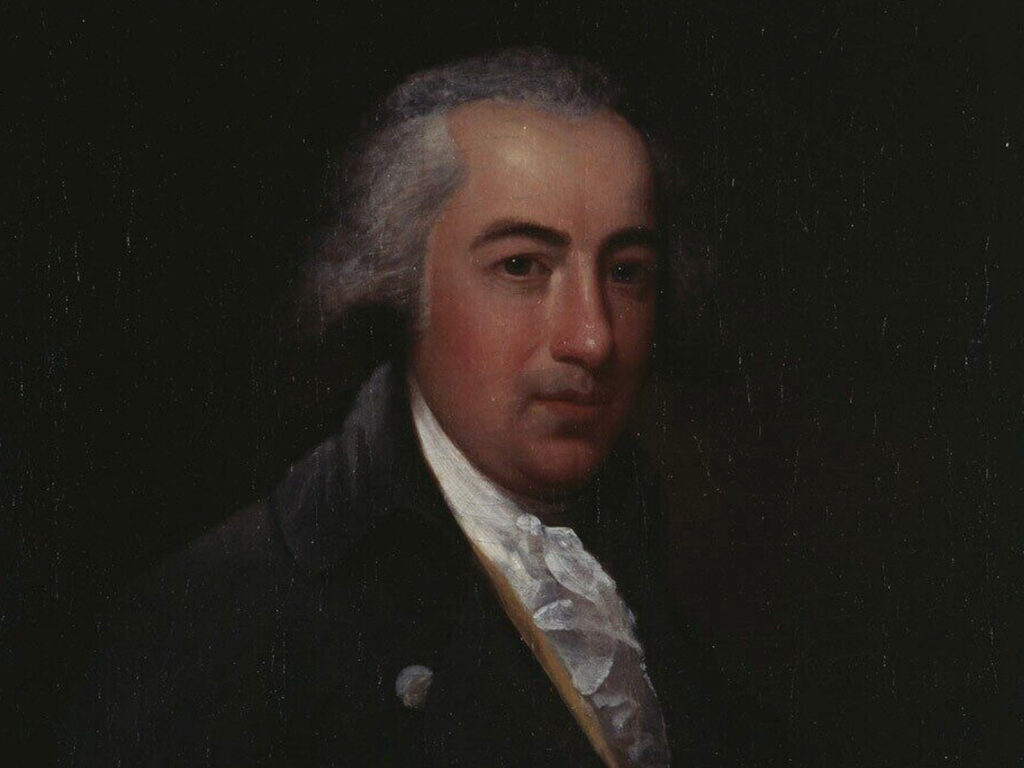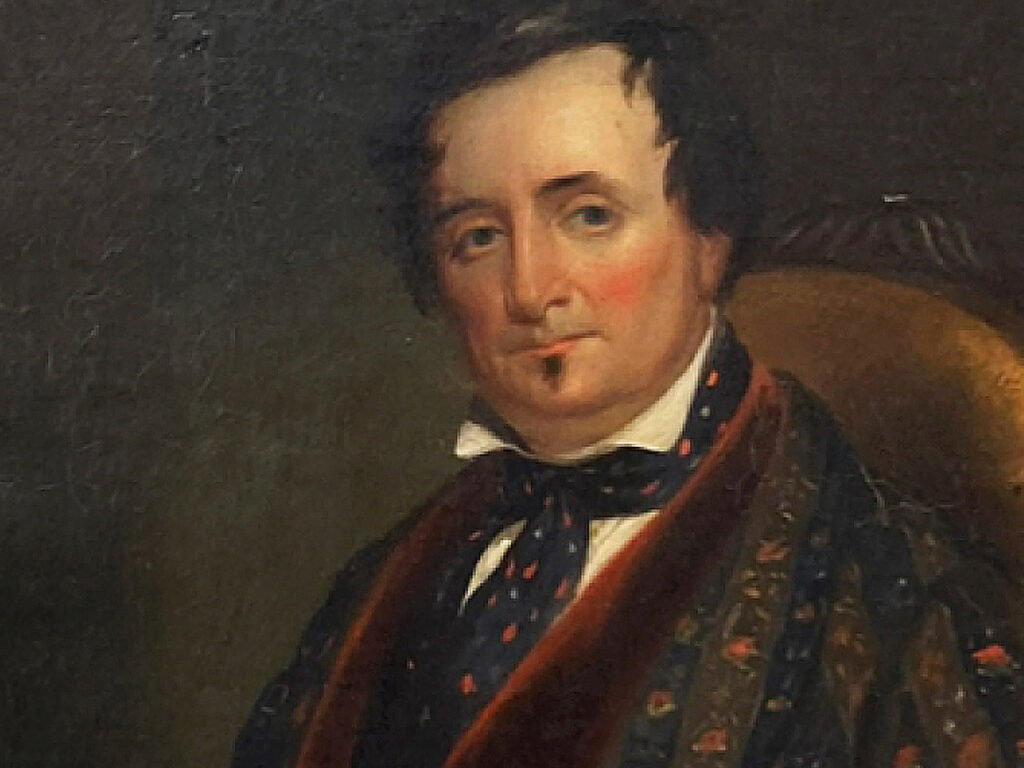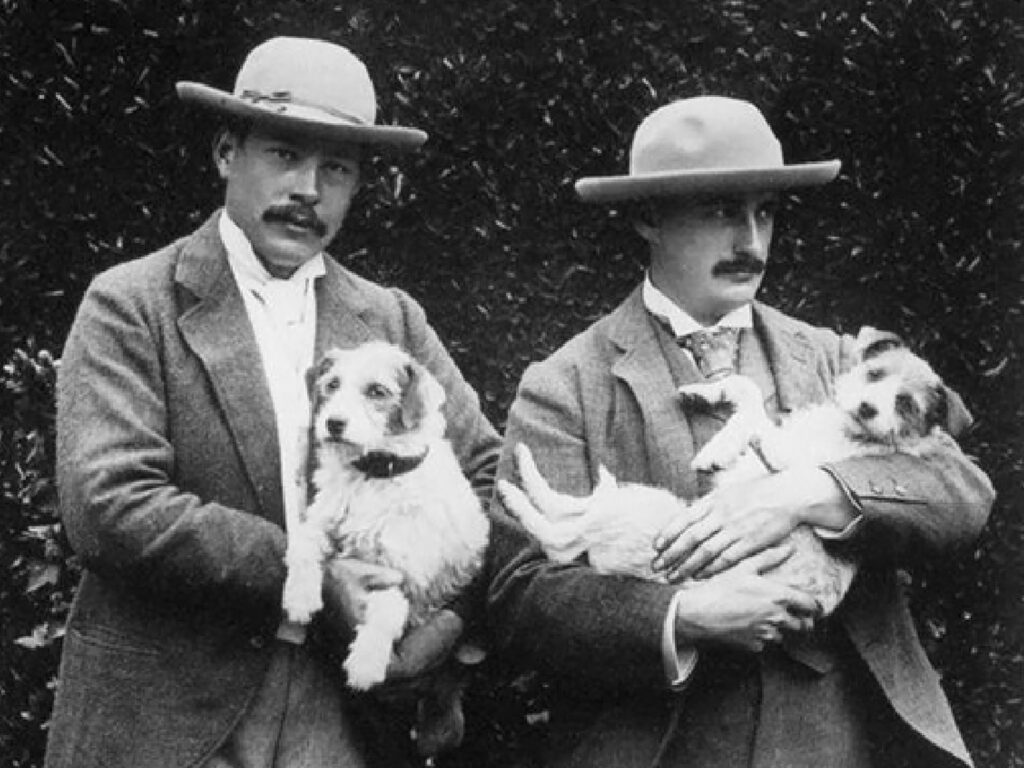This photograph, taken at some time before 1894, shows the mythological painting of Venus hanging among other works in the Bowdoin College Chapel, Sophia Walker Gallery. In the painting—which is a copy of a Titian (c. 1488–1576)—Venus twists, displaying her lovely naked back as she vainly tries to prevent Adonis, her beloved, from leaving on a dangerous hunt. In the photograph, her pale flesh reflects the rose light from the chapel’s large, stained-glass window: an alluring pagan goddess lifted up in a Christian space. This is just one of the ironies entwined within James Bowdoin III’s (1752–1811) collection of paintings gifted to the College in 1813. This essay reflects on a few of Bowdoin’s classically themed paintings and their resonance in late eighteenth- and early nineteenth-century culture.
Art as refining taste and character
Bowdoin likely shared the centuries-old belief espoused by eighteenth-century theorists and collectors that art could improve taste and refine character. In 1715, Jonathan Richardson opined that “a painting which conveys an edifying or instructive thought is better than one which is merely attractive.” Horace Walpole, speaking in 1772 on his copy of Poussin’s Continence of Scipio, judged it “painted with all the Purity and Propriety of an ancient Bassrelief.” The catalogue for the newly opened Musée des Monuments français stated, “The cultivation of the arts of a people increases its commerce and prosperity, purifies its morals[…].” Bowdoin III grew up in a household rich with art and, thus, may well have already shared similar ideas about the probity and educational value of painting. His education in England, tours of Europe, and service in Paris could have reenforced such beliefs.
Bowdoin College’s leaders later proclaimed this same confidence in art’s moral power. Bowdoin President Leonard Woods reiterated this understanding when discussing his 1840 trip to Oxford: “[…] a magnificence of architecture, an assemblage of paintings […] does more to purify the taste and elevate the character than the whole encyclopedias of knowledge.”
Classically Themed Paintings: Visibility, Praise, and Expurgation
Despite visits to Naples, Pompeii, and Rome during his Grand Tour of Europe (1774–1775), it seems Bowdoin did not collect authentic ancient Greek and Roman antiquities. He did, however, amass numerous paintings, prints, and drawings of classical themes in his art collections. These often filtered the ancient stories through sixteenth- and seventeenth-century versions as depicted by highly esteemed Old Masters such as Titian, Nicolas Poussin (1594–1665), and Peter Paul Rubens (1577–1640). Bowdoin’s appreciation for the classical world stands out prominently in the five largest and most eye-catching paintings among his gifts to the college: three copies after Titian, Venus and Adonis, Venus Educating Cupid, and Danaë and the Shower of Gold, a copy after Poussin’s Continence of Scipio, and a so-called Venus and Ceres.

